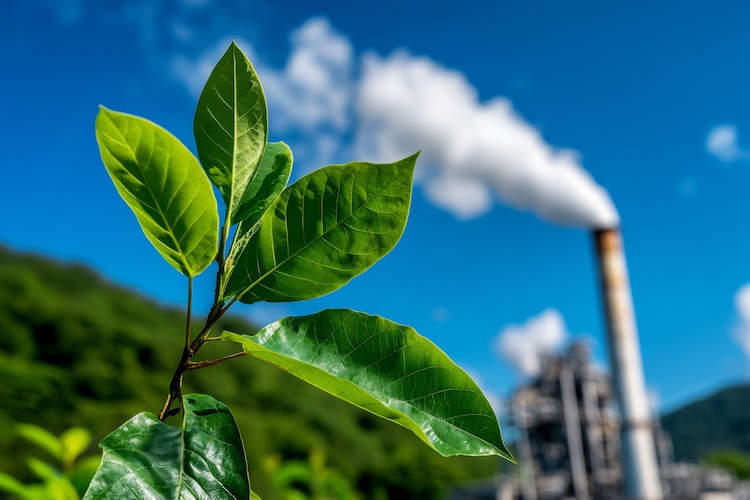Profitable Emissions Sustainability
Emissions Sustainability

Our technology pre/during combustion catalysis has proven that carbon consumption and all GHG reduction can achieve substantial ROI. BRDLLC’s homogeneous catalysis is the profitable location for the catalytic conversion of hydrocarbons and their side effects. At best conventional heterogeneous (ceramic matrix) catalysts regardless of style or use (mobile sources [engines] , power plants, burners, and boilers [SCR’s]) have a maximum of 60 to 65% surface area contact. This structure is extremely fragile and vulnerable, subject to cyclic temperature breakdown resulting in catalyst loss and function, poisoning, and exponential degradation. In mobile or load-varying sources high after-treatment maintenance is required, dramatically reducing effectiveness, as well as component and combustor longevity . This degradation not only increases toxic exhaust emissions but reduces performance and increases fuel consumption. In addition, converting the toxic gas emissions after they are formed wastes energy is less effective and costly. Brilliant chemistry wrong location! The best location is during combustion by homogenizing the catalysts and introducing them into the flame which a myriad of benefits are realized including a return. Applying catalysts directly to combustion blocks or inhibits the formation of greenhouse gases (GHG) converting them into energy conserving fuel (reducing CO2 emissions) while boosting performance without detriment. Learn more about profitable emissions sustainability and Bair Research.
Bair Research Nano Catalysts
Our nano catalysts begin homogeneous where surface area is 100% and the fact that they are homogenized with combustion air allows phenomenal catalyst distribution. In fact, they begin working prior to combustion providing additional oxygen radicals (more usable oxygen especially significant at high-altitude). Our proprietary blend simultaneously reduces soot, aromatic emissions and NOx. Applying catalysts during combustion blocks/inhibits endothermic and provides additional exothermic reactions improving combustion efficiency chemically. After combustion catalysts become heterogeneous precipitating a nano catalytic layer in the combustion chamber. This beneficial anomaly improves over time and therefore is not subject to inevitable industry wide performance robbing and costly maintenance accepted entropy
The downside. The catalysts are consumable and must be replenished during normal maintenance intervals. This is hardly a downside considering performance improves over time and a secondary advantage of nano particle catalysts with increased surface area considerably less catalyst is required, and therefore, a significant ROI is realized from fuel savings alone. As mentioned above the catalyst decomposes into the most catalytic form the actual non-toxic elements and provides a heterogeneous corrosion inhibiting catalytic combustion enhancing nano layer. This is true with all hydrocarbons from coal to natural gas. Additional revenue streams may be available through CO2 and GHG credits trading. Regardless, the environmental impact of CO2 and more toxic GHG’s without any fuel savings the technology’s benefits would be worth the cost and possibly a significant ROI in themselves. But considering the significant return, even reluctant participants will voluntarily join the hydrocarbon and all emissions reduction community, albeit global mobile sources or countries.
These returns and maintenance reductions will promote and encourage additional attention to efficient and conscientious operation. Incentivizing maintenance crew will ensure maximized and repeatable results for the life of the hydrocarbon combustor (engine, burner, boiler regardless of hydrocarbon utilized). Maintenance is always considered a necessary evil but with this technology’s cost-effectiveness and perennial incentives would be transformative. Maintenance once a budget drain now a potential new revenue source. Maintenance historically has been reluctant to accept new technology especially with the advent of current aftertreatment emissions systems unforeseen, obnoxiously high operational costs including performance losses and increased cycle times. Therefore, a significant incentive program will ensure maintenance acceptance and vigilance.
How Bair Research Can Help With Profitable Emissions Sustainability
Given the application of Bair Research’s novel and patent pending Nano Catalyst Injection System (NCIS) technology will be shortly realized on the bottom line. Our technology regardless of emissions control strategy or hydrocarbon utilized will reduce fuel consumption, lessen CO2/GHG emissions, diminish engine/combustor maintenance, improve exhaust aftertreatment longevity, effectiveness, and service intervals. Any one of these benefits will positively affect the bottom line but all in concert will provide an astounding result for any operation. These benefits are proven over many years with all forms of hydrocarbon combustion. Our proof has been developed over decades and irrefutable evidence contained in this website.